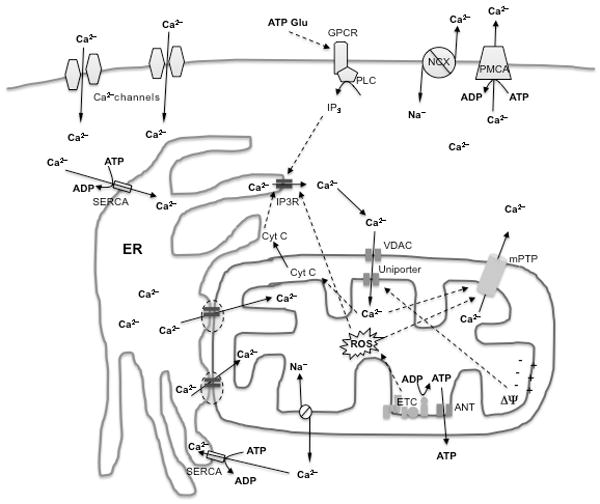Figure 2.

Mechanisms of intracellular calcium homeostasis and signaling.
Calcium enters cells from the extracellular space via calcium channels, including store-operated, ligand- and voltage-gated channels. In addition, intracellular calcium rises in response to metabotropic receptor stimulation, for example by glutamate or ATP, and production of IP3, which activates IP3 receptors (IP3R) or ryanodine receptors (not shown in figure) on the ER. IP3R activation induces calcium release from the ER stores, which contain high calcium concentrations because of the activity of SERCA pumps. Calcium is taken up by mitochondria through the membrane potential-dependent activity of the uniporter. Calcium transfer from ER to mitochondria can occur directly through “hotspots” localized on juxtaposed ER/mitochondrial membranes (indicated by dashed ovals). Mitochondrial calcium is extruded by the exchange with sodium by the mitochondrial Na/Ca exchanger. Under mitochondrial permeability transition conditions, stimulated by high calcium and reactive oxygen species (ROS), calcium, along with other solutes, is released through the mPTP. Cytosolic calcium is extruded by the Na/Ca exchanger (NCX) and the plasma membrane calcium ATPase (PMCA).
